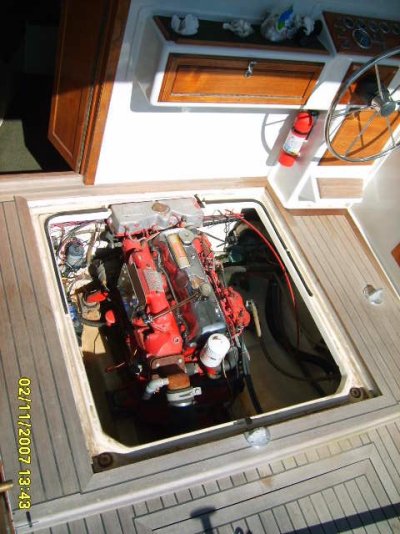In regard to the melted piston I think it was either the aft or second to aft piston,ie closest to the gear box. Mentioned the impeller on the raw water pump to discount circulation issues with the raw water cooling system.Interestingly when we brought the boat into dock the mechanic was there within 15 minutes and managed to start the port engine and checked that it was still pumping out through the exhaust.That's when he told me it didn't look to bad ,maybee a head issue.HA!, $24,000 later- thankfully I have a very understanding insurance company.
When we bought Sarawana it was our first time with 2 engines, our previous boat was a Clipper 34 with a single Lehman,so we got a professional skipper to take us out for the day to teach us the in & outs of the new mighty twin. He showed us how to the bleed engines, unfortunatley he forgot to tighten the bleed screw up properly, and after about 10 minutes of running the engine warning buzzer sounded.After shutting down the motor we took a look in the engine bay to find covered top to bottom with our fresh water coolant, so he tighened the screw and filled the header tank from our deck wash hose,which as we discovered later, unlike our old boat, was seawater.When our mechanice found out he went 'off' bigtime, gave him a mouthful the sent him the bill for flushing out the engine and wasting his time. Don't you just love boats, and the slightly deranged mob who own/look after them.


